Dean Buttacavoli and his fiancée Emily co-own Cabbage Throw Farm in Hunterdon County, New Jersey.
Dean and Emily specialize in organic vegetables on their small-scale bio-intensive farm.
They lease 3 acres of land from another 40-acre organic fruit and vegetable farm called Comeback Farm. They have a unique collaboration with Comeback Farm: they share markets, customers, workspaces, as well as a good deal of equipment. Of their 3 acres of leased land, 1.5 acres are in production.
Being a small-scale market farm, they grow on a standardized 30-inch permanent bed model and manage everything with the typical small-scale farm tools and equipment: the BCS walk-behind tractor, the tilther, caterpillar tunnels, silage tarps, etc.
They broke ground five years ago in the summer of 2017 and have just finished their fourth season of sales. Dean and Emily are the primary labor force, outside of one seasonal employee who works April through November. Bringing on an extra farmhand has helped tremendously to bring balance and offset their workload.
The Cabbage Throw Nursery Setup
Over the years, the Paperpot Transplanter system has become an integral part of Cabbage Throw Farm. However, Dean emphasizes the importance of dialing in seed starting and germination in the nursery before adopting the Paperpot system. If repeated germination failures are a common occurrence, the cost of paper chains will only accentuate those losses. After a lot of trial and error on their farm, they have finally arrived at a system that works great for their context.
The nursery setup at Cabbage Throw Farm consists of Redi-heat Mats on wire racks and a DIY germination chamber, all located in a climate-controlled shop space. For crops that are less challenging to germinate (like brassicas, lettuces, baby greens, chicories, beans, peas, and allium crops), seeds are sown into Paperpot trays, watered, covered with clear plastic humidity domes, and then placed on the racks over the heat mats. Not only do humidity domes hold in the heat and moisture, but they also serve as rodent protection when the vegetable seeds are most vulnerable.
They use a simple germination chamber that they built themselves for the crops that are more challenging to germinate (such as beets, spinach, chard, cilantro, and parsley). It’s composed of an inexpensive crockpot from Target wired into an Inkbird temp controller. Between the heat mat rack system and the germination chamber, they have achieved rock-solid germination on most crops. Deans says this has done wonders not only for their reliability but also for their confidence as farmers.
The Cabbage Throw Paperpot System: “Earlier the Better!”
On Cabbage Throw Farm, they’re typically seeding around 40 to 50 trays per week, all done as a two-person team in a single afternoon. According to Dean’s calculations, it takes them only 6-7 minutes to fill a tray with soil, dibble it, seed it with the drop seeder, and get it watered in. He believes that the drop seeder is really what rounds out the Paperpot system’s efficiency. They have found it much more pleasant and less noisy than the vacuum seeder setup they used to use, with cords and hoses always getting in the way while they’re working.
Once you have a reliable seed starting system, Dean’s next emphasis is on understanding how much time the Paperpot trays will spend in the nursery. In addition, you’ll need to be able to gauge when your trays need to get into the ground and be transplanted. Systematizing these timings will help you better align your bed succession and turnover schedule with what’s actually happening in your nursery. When you’re operating on small acreage with limited space, it’s crucial to know where every tray will be planted.
The individual cells of the paper chains are relatively shallow and much less forgiving than conventional plug flats. Because of this, you can’t as easily delay planting and hold onto your propagation trays while waiting for space to become available in the field. You must ensure that you’re getting your seedlings into the ground at their most optimal state.
When to Transplant
At Cabbage Throw Farm, they have found that it’s almost always better to transplant seedlings when they are still relatively young. “The earlier, the better” is their guiding mantra when experimenting with different timings. Root growth is their primary indicator of when to plant out a tray. This requires constant monitoring of the undersides of trays to see how the roots are developing. They have learned that once the roots hit the bottoms of the tray, they’re going to become entangled with the roots of their neighbors quickly, and this is what they try to avoid. Their goal is to get the trays into the ground before that mat of roots has had an opportunity to form under the tray. Avoiding the root mat will also make running the Paperpot Transplanter much smoother.
Another benefit of their early transplanting strategy is that it allows them to get by with a much smaller nursery space than they would have otherwise needed if they let their seedlings mature for a longer period of time. Most trays only spend 2-3 weeks in their nursery in their current system.
Having fewer trays and a shorter window of time when trays are occupying the space is a strategic move in two ways:
- It’s going to shorten the amount of time required for greenhouse watering
- It will save you the expense of investing in a larger nursery infrastructure, which is especially helpful when just starting out.
If you’re renting land on a short-term lease, you likely don’t want to put in the time and effort towards constructing a semi-permanent greenhouse, especially if it may need to be deconstructed and moved in a season or two. For Cabbage Throw Farm, they can’t be certain of how long they’re going to be at their current location, so investing in their nursery infrastructure would not be a wise move for their context.
Pre-Sprouted Seeds vs. Traditional Transplants
Dean’s approach to the Paperpot system was heavily influenced by Ben Hartman, author of The Lean Farmer. Hartman suggests that growers should view the Paperpot Transplanter as a tool that allows for the direct seeding of pre-sprouted seeds instead of viewing them as traditional transplants. This philosophy has been taken seriously at Cabbage Throw Farm.
For Dean and Emily, it’s to the point where the Paperpot Transplanter has almost entirely replaced their direct seeder. They now only directly sow their baby greens and carrots at certain times of the season. This might seem a bit extreme or too expensive, but for them, the advantage of taking germination entirely out of the field and under complete control in the propagation room has been an absolute game-changer.
They no longer worry about being pushed out of the field due to rain. Their seedings stay on time and on schedule, especially when used in combination with silage tarps that keep their plots dry. They also eliminate the risk of germination failures associated with bad weather and extreme seasonal temperatures.
In essence, their planting system has become almost entirely risk-free and predictable, which has done wonders for their business and their mental health! By paperpot transplanting most of their crops, it has also streamlined and simplified their seed ordering procedures.
Planning how much seed is needed for the coming season has become a much easier task. They used to find it much more difficult to predict their seed usage, especially when trialing and changing between different seed rollers and spacing calibrations. This led to frequently planting more seed than they had initially estimated and getting discouraged when running out of seed midway through a planting. They used to order 30% more seed as an insurance measure when direct sowing, which would often lead to having an excess of seed, which would lose its viability over time in storage. Dean credits the Paperpot Transplanter with helping to cut their seed bill in half and producing much more vegetables than they ever have.
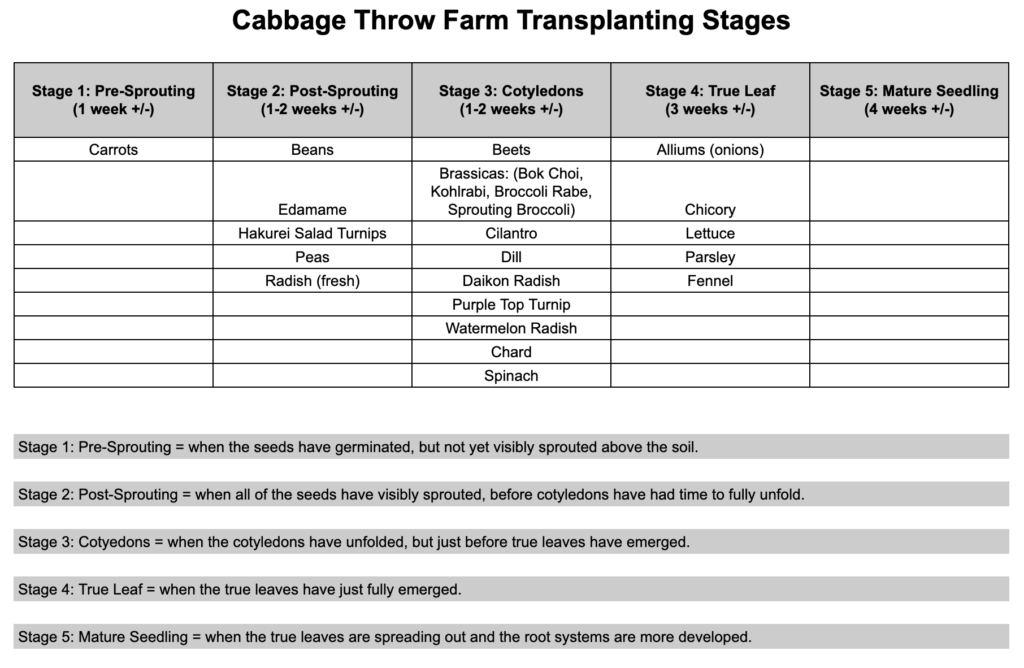
The Cabbage Throw Paperpot Transplant Stages
Cabbage Throw Farm has categorized five stages for determining which crops are ready for transplanting: pre-sprouting, post-sprouting, cotyledon, true leaf, and mature seedling. Root growth is their first indicator of when a crop should be transplanted. Their crops are placed into these categories based on root sensitivities and the rate of root development. The five stages are to be understood as general guidelines, not hard and fast rules.
1) Pre-Sprouting Stage
The first stage is pre-sprouting. This refers to crops transplanted out in paper chain pots even before the germinated seeds have visibly sprouted above the soil. Carrots are the only crop that Cabbage Throw Farm will transplant into the field at this stage.
Dean suggests that with paperpot carrots, you should be planting them in the pre-sprouting stage to avoid disturbing the carrot taproot. Carrots transplanted later are highly susceptible to forking. Most customers are used to seeing a long, straight carrot. Misshapen and forked carrots will be a harder sell at the market. However, he believes it’s better to have forked carrots to offer than no carrots. In his experience, people will still buy them as long as the bunches look fresh and clean and the stack is well presented at market.
In the past, Cabbage Throw Farm could typically get a nice stand of direct-seeded carrots in the spring but would find it much more difficult when the heat of summer arrived. They struggled with poor germination and yields well below their target harvests. This led to experimenting with paperpot transplanting and led to immediate good results! As they kept with it, they refined their system and have learned to rely on it, especially during certain times of the season.
At Cabbage Throw Farm, trays of paperpot carrots are placed on heat mats set between 70 and 75 degrees. Seven days after seeding, they will schedule a twice a day check for sprouting. The carrots don’t usually come up in unison, but when they observe 15-20% of the tray beginning to sprout, that indicates that it is time for transplanting. Even though most of the tray has not yet sprouted, this indicates that all of the seeds have begun to germinate. This means you must have your field fully prepped and ready to receive the trays during this crucial window of time for transplanting.
They used to seed their rows of carrots more densely, around ½-1” in-row spacing, but in their context, this led to various foliar diseases. Because of this, they now prefer 2” paper chains for their in-row spacing. They also prefer using raw seed, mainly because it’s less expensive than buying pelleted seed. They don’t worry about dropping multiple seeds per cell when seeding with the Kwik Klik Drop Seeder, or thinning out their plantings. Pelleted seed is entirely acceptable to singulate your seed, something you would want to do if increasing airflow or growing a larger carrot was the goal.
The biggest drawback with transplanting carrots is the extra cost associated with the paper chain pots and the extra potting soil. This expense can add up very quickly, especially as your carrot plantings grow larger. In the earlier years of Cabbage Throw Farm, they would only plant one to two beds of carrots at a time, which is why paperpot transplanting worked so well for them. But now that their average carrot planting is around 6-12 beds at a time, this has made the expense less feasible to continue with paperpotting. For their context, they are now paperpot transplanting their earliest crop of carrots which are seeded in the first week of February and then transplanted out into an unheated caterpillar tunnel.
A Head Start in the Market
The paperpot system has given them the ability to plant seedlings in late winter when temperatures are still extremely cold, and germination is painfully slow. Their well pump is still shut down and winterized at that time of year, so watering direct seeded crops isn’t even an option at that time. This gives them the headstart needed to stay competitive in their markets. In the mid-Atlantic region, where they are growing, everyone’s first planting of field carrots isn’t usually ready until at least mid-June. The Paperpot Transplanter and their caterpillar tunnels have allowed them to bring carrots to market 3-4 weeks earlier than other field-based farmers!
2) Post-Sprouting Stage
The second stage is when all of the seeds in the paper chain have visibly sprouted. The cotyledons of the plants may have not even had time to unfold fully.
The post-sprouting stage is an excellent time for transplanting crops usually thought to be direct-sown sown crops. Crops that would do best being transplanted at these stages would be those that are more sensitive to transplant shock than others, with roots that don’t tolerate being disturbed. Some examples of these crops would include red radish, french breakfast radish, hakurei salad turnips, beans, peas, edamame, and some legumes.
3) Cotyledon Stage
The third stage is when the plants have fully developed cotyledons and may even be getting ready to send out the first set of true leaves. The bud of the true leaves may be observed at the base of those cotyledons. This stage can be anywhere between one to two weeks after seeding.
The cotyledon stage encompasses all crops less sensitive to shock but should still be planted out early to avoid disturbing their roots. This applies to storage roots (such as daikon, watermelon radish, purple top turnips), brassicas, cilantro, and dill. Beets are also put into this category to prevent a leaf spot from forming in nursery trays, which frequently happens in late summer plantings.
4) True Leaf Stage
Once those true leaves are fully up, the plant is now in the fourth transplanting stage. For most crops, this occurs around three weeks of age. Lettuce, chicories, parsley, fennel, and alliums are the crops that Cabbage Throw Farm will paperpot transplant at this stage of growth.
5) Mature Seedling Stage
Usually beginning in the fourth week, this fifth stage refers to crops allowed to reach fuller maturity where true leaves are spreading out, and root systems are growing more robust. Cabbage Throw Farm has found the greatest success by transplanting most of their paperpot crops just before they have reached this maturity level. But the crops mentioned above listed in the True Leaf Stage have also proven to continue holding well into their fourth week.
Q&A: Concerns About Paperpot Transplanting Too Early
Question: Do tiny transplants in the cotyledon stage suffer from getting buried too deeply or too shallow at that stage? Are they more fragile when being introduced to the field environment where they might experience extreme cold or heat?
Answer: Cabbage Throw Farm has seen the opposite. When it comes to seedlings in paper pots, they have found that the more they let plants mature, the more susceptible they become to transplant shock. Their guiding principle has become “the earlier, the better” with almost everything. They’ve noticed their crops transplanting more successfully in the cotyledons stage before the true leaves have emerged.
They have found that removing the closing fins and only using the press wheels on the Paperpot Transplanter works perfectly in their soil context to prevent transplants from potentially getting buried too deep into the soil. Loosening the top 2” of soil with either a tilther or power harrow will help to get transplants at the perfect depth.
Question: Typically more root mass in the paperpot helps to keep the plant and soil intact inside the cell of the chain. Are there issues with the cells not holding together when getting transplanted so young?
Answer: No. As long as extra care was taken to adequately pack the trays with potting mix and the trays were well-watered, Dean and Emily have had no issues with this.
Got questions?
Get in touch with Farmer Dean Buttacavoli of Cabbage Throw Farm
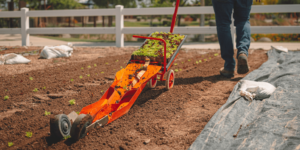
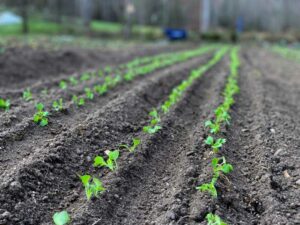
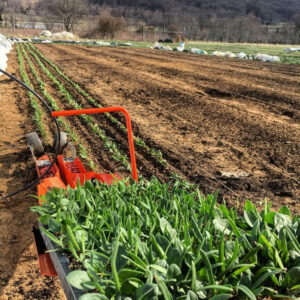
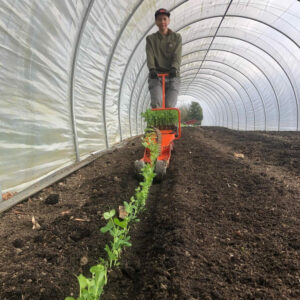
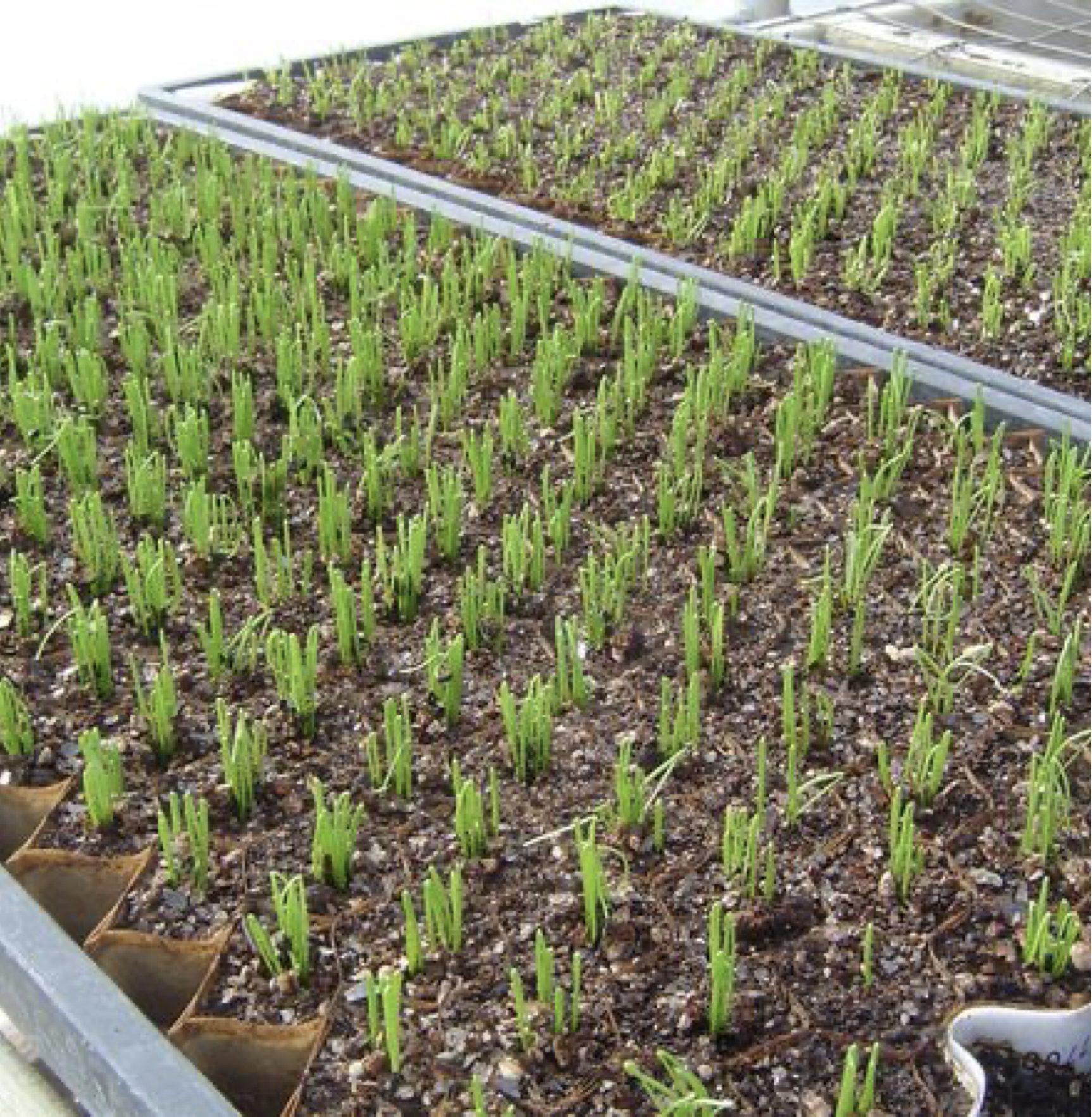
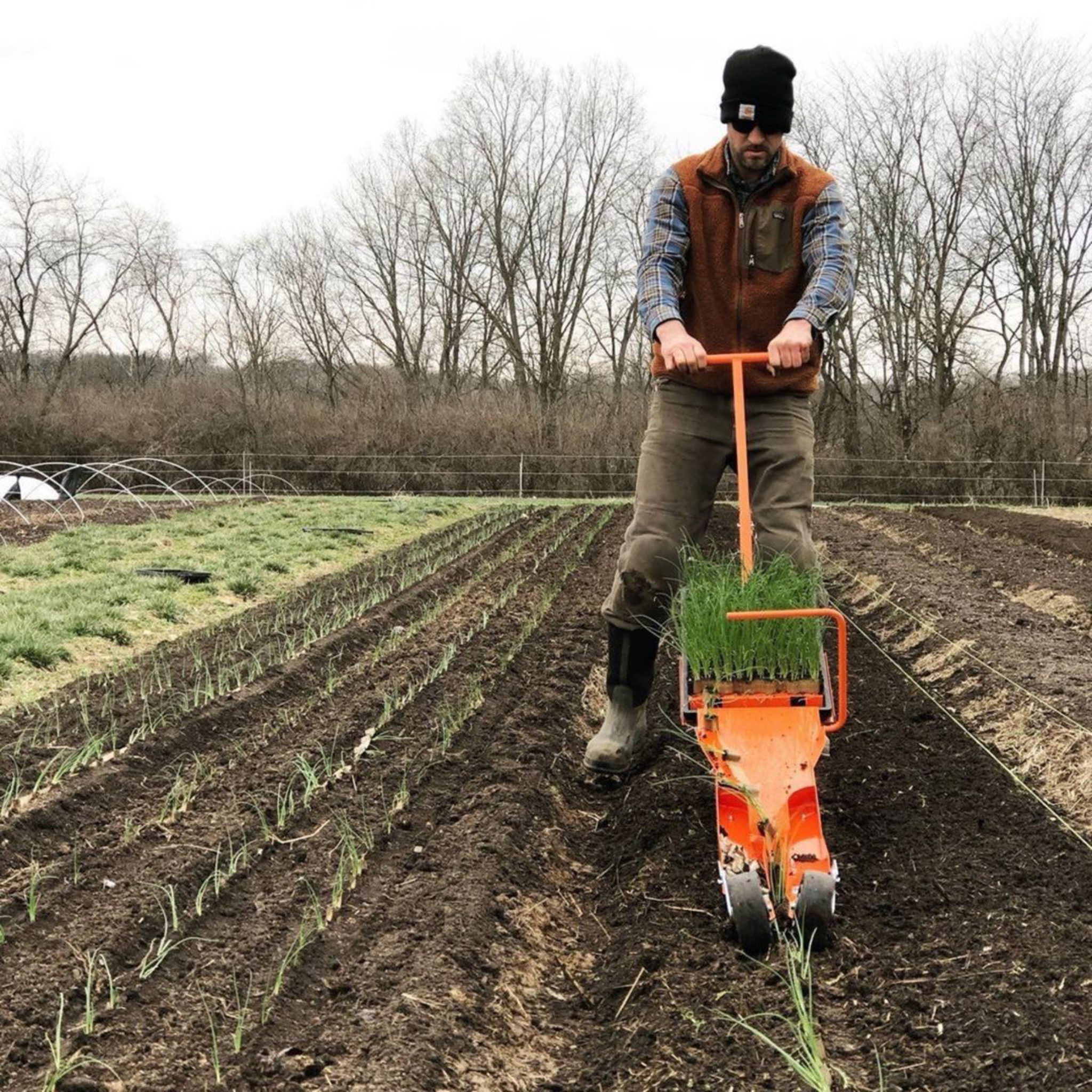
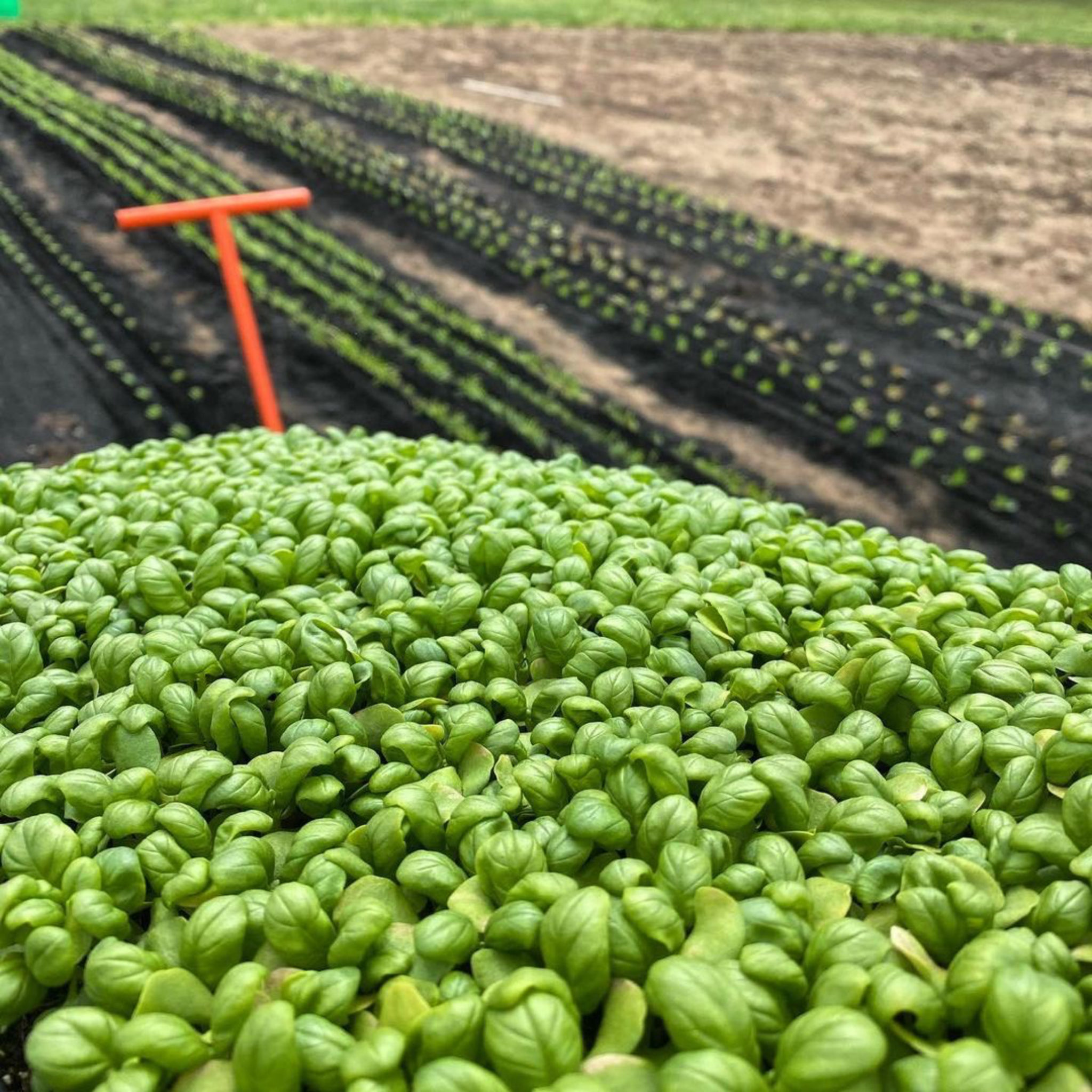

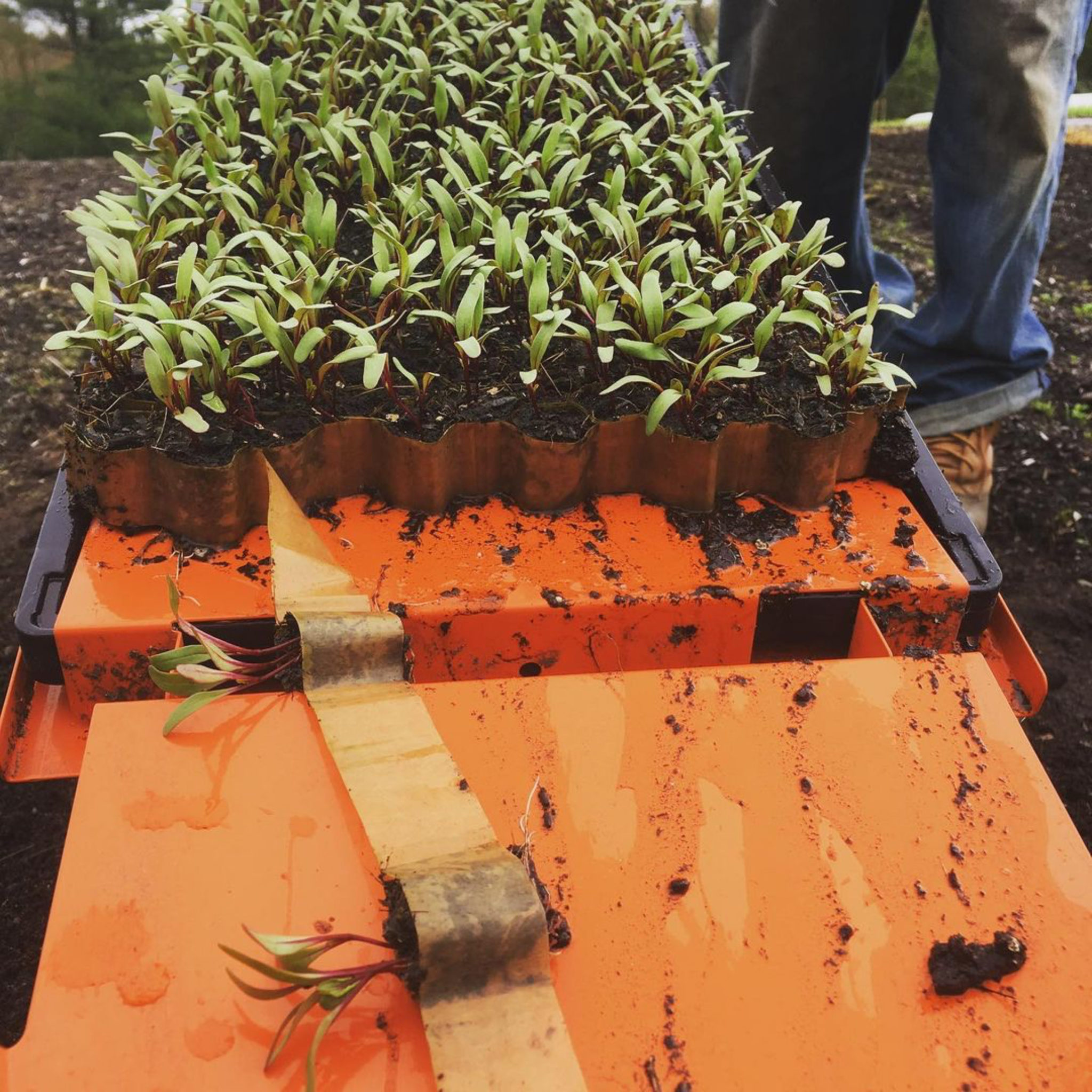
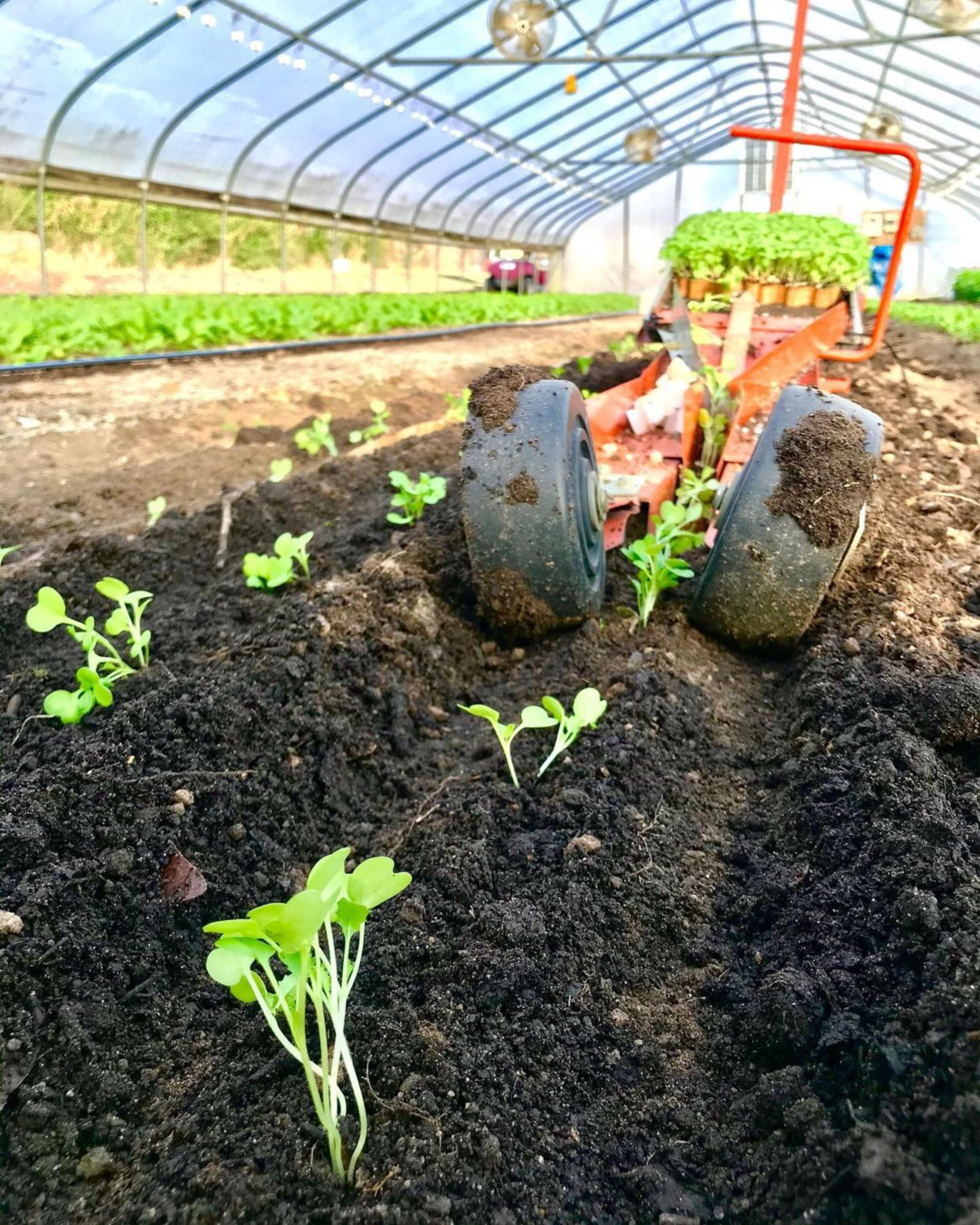
Relevant Links
How to Use the Paperpot Transplanter | Paperpot Transplanter Grower’s Notes | How to Grow Head Lettuce in Paperpots
